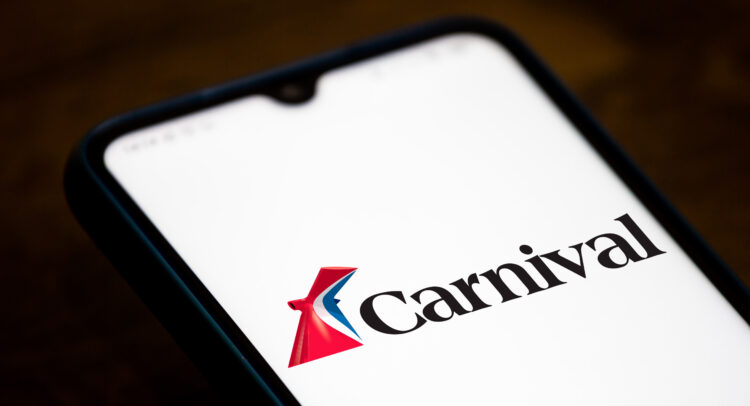Carnival Corporation (NYSE:CCL), also known as Carnival Cruise Lines, provides cruise ship experiences to customers, primarily in North America and Europe. In addition to owning and leasing a lot of cruise ships, the company also owns and leases “port destinations, exclusive islands, hotels, and lodges.” However, I’m bearish on CCL stock because I believe its enormous debt is a limiting factor and will significantly delay returns to common shareholders.

Carnival’s Financials Are a Bit Worrisome
Carnival struggled during the pandemic, but its revenues have since rebounded in a big way, as people are beginning to feel comfortable getting back on cruise ships. Over the past 12 months, Carnival reported its highest revenues in a decade. The problem is this hasn’t translated into profitability, which is what ultimately matters to shareholders. The company had negative net income in 2023 and again in Q1 of 2024. This tells me that its expenses are ballooning alongside its sales.
Investors may take some solace knowing that Carnival is back to being free cash flow positive, but there’s another problem. Carnival amassed a ton of debt in order to survive the pandemic and currently has a long-term debt obligation of $28.55 billion. This is far too much compared to its $2.39 billion in operating income. The company can barely pay the net interest on its debt, which stands at $1.79 billion. I like to see interest coverage at greater than 5x, but Carnival’s interest coverage ratio is only 1.3x.
So, what does all this mean for CCL shareholders? For one, Carnival is a risky investment because of its debt profile and comparably weak earnings. I think many investors understand this risk.
The second problem is that all of Carnival’s free cash flow is being used to pay down its debt, meaning bondholders are receiving their interest and principal. However, shareholders aren’t receiving any dividends or share buybacks because there is no cash left over.
In fact, Carnival’s cash reserves are dwindling, dropping from $9.51 billion in 2020 to just $2.24 billion today. And Carnival’s working capital is now deeply negative. Given the state of Carnival’s balance sheet, I see this trend continuing for a long, long time.
Rising Expenses and Cyclicality Remain Issues
Carnival has not been an inflation beneficiary. This is because the company needs a ton of fuel to run its cruise ships and lots of food to feed its customers. Both of these costs have increased dramatically, and energy prices are rising again in 2024, with Brent crude prices spiking. For these costs to fall, the Federal Reserve may have to force the economy into a recession.
But Carnival is a cyclical business. Cruises are expensive and non-essential purchases for most people, which means the demand for them tends to fall off in a recession. Both Carnival and its competitor Royal Caribbean Cruises (NYSE:RCL) saw operating income flatline from 2000-03 and fall off from 2007-09. If the conflicts present in Eastern Europe, the Middle East, or the South China Sea were to spread/escalate, this could also cause Carnival’s ships to be sidelined or change course.
Carnival’s Valuation Implies a Rebound
Carnival has a market cap of $18.5 billion. Let’s assume that the company is able to return to the $3.31 billion of operating income it averaged during its glory days (2017-19). If we subtract the company’s $1.79 billion net interest expense from this, we get $1.52 billion of pre-tax income and roughly $1.20 billion of net income. This would give Carnival a P/E ratio of just greater than 15x.
A P/E of 15x isn’t cheap for a company with Carnival’s debt and economics. Remember, the rosy scenario above doesn’t factor in Carnival’s debt extinguishment and other expenses. Further, capital expenditures are notorious for running above depreciation and amortization in this industry, meaning free cash flow will tend to be lower than net income.
I estimate that all of Carnival’s profits will need to go toward debt principal repayments for the foreseeable future (say, five to 10 years). Therefore, none of these profits can sustainably be paid out to shareholders. This is why I’m bearish on CCL stock.
Is CCL Stock a Buy, According to Analysts?
Currently, 14 out of 15 analysts covering CCL give it a Buy rating; one rates it a Hold, and zero analysts rate it a Sell, resulting in a Strong Buy consensus rating. The average Carnival Corporation stock price target is $22.75, implying upside potential of 59%. Analyst price targets range from a low of $20 per share to a high of $25 per share.

You can see that analysts widely expect Carnival’s profits and, therefore, returns to improve in 2024. This makes my take on CCL stock somewhat contrarian.
The Bottom Line
Carnival’s profits are widely expected to improve in 2024. Still, the company has far too much debt and carries a deeply negative working capital position. Thus, I think Carnival will need to use all of its free cash flow to pay down debt for the next five to 10 years, meaning this cash cannot be returned to shareholders via dividends or buybacks. In light of this, I view CCL stock as expensive.









